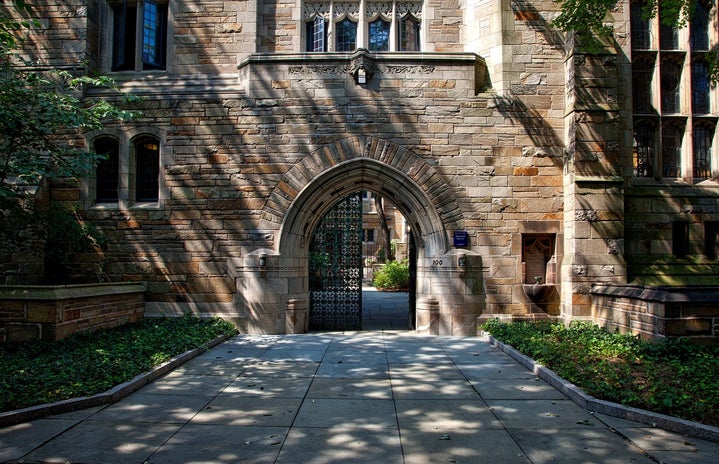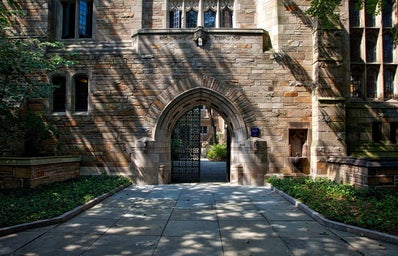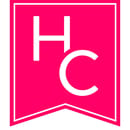Name: Kate Lavrentios
Hometown: Needham, MA
Major: Communication
Graduation year: 2018
Age: 21
Height: 5’11.5”
Weight: 200 lbs, baby!
Instagram: @katelavrentios
Q: How did you get involved in modeling?
KL: I spent the spring and summer of 2016 sending my pictures to different agencies in the hopes of them signing me. I think I applied to every agency in New York and Boston and they would either send a rejection letter or there would be no response. Towards the end of the summer, I was connected with True Model Management and we both decided this agency was the right fit for me!
Q: What are some of the challenges of balancing being a student and a part time model?
KL: There are various challenges that come with being a student and a part time model. The biggest challenges I have faced are time management and staying determined. Before I signed with True Model Management, I would have some trouble with procrastination. I have very early mornings and a busy schedule, so it’s easy to nap and push things off. There are days when I get an email about a casting call mid week, have to leave right from class and drive three hours to Manhattan for what could be a five minute or three hour casting call, and let me tell you, there is nothing quite like walking into a room full of models hungry for the same opportunity. There were multiple times when I would be leaving New York at 9 p.m. and driving back to UConn blasting Rihanna with a slice of pizza in my hand, trying to pump myself up for all of the homework I would have to finish before my early wakeup. Luckily, I am fortunate enough to have cousins in Brooklyn that offer me a place to stay if I don’t have any commitments the next morning (S/O to the Vandenhoecks!).
Q: What is the process of being selected to be a plus size model and how do you feel about the term “plus size?”
KL: To be grouped into the term, “plus size,” is confusing. I hear different requirements for plus size models all the time. Some say it starts at size 8 and goes up to 16, other times I hear that it starts at a size 6 and goes up to a size 24. Regardless, I am a size 12/14 depending on the kind of week I’m having. I think we can all agree that all of the wonders of being a woman come with the curse of bloating, and the bloat is real. I knew when I wanted to pursue my dreams of becoming a model I wouldn’t be considered a slim size model.
I personally feel that the term, “plus size,” is damaging. At this point in my life, I have no problem being called, “plus size.” I don’t prefer it, but I don’t let it affect me in a negative way. If I were to be called plus size when I was younger that would be a different story, because it feels like the modeling industry is insinuating that if you are above a size 6/8 you are considered to be above average size. I truly cannot remember the last time I was a size 6, perhaps coming out of the womb. Eventually, I would like to see the term, “plus size,” disappear and replace it with, “curve model,” instead. Having curves is a blessing and it should be celebrated!
Q: What are some of the things you have learned in the plus size modeling industry?
KL: I am in my development year as a model and still have a lot to learn. Before I signed with True Model Management, I had an idea about what being a plus size model meant. I figured it was mostly about having a great photo shoot, knowing your angles and wearing the right outfit that “accentuates your curves,” but it is so much more than that. I have an extremely talented and inspiring agent, Alexandra Boos, that urges me to step out of my comfort zone and speak my mind. I have learned that a huge part about being a plus size model is about finding your voice. It is about telling women everywhere, “Hey, you can be above a size 8 and you can still love every inch of yourself.” It is about going against the societal norms and the unrealistic beauty standards that society has set for us. The Plus Size Industry isn’t trying to say that curves are better and everyone should try to be curvy, the Plus Size Industry is saying it is okay and normal to have curves and that all different body types should be celebrated. All that matters is that you love the skin you’re in. Even if you are trying to lose weight, you are still allowed to love yourself how you are at this moment in time.
Q: The body positivity movement has taken off in more recent years, but the climate for plus sized and curvier women was not as accepting when we were growing up, could you talk about your mental journey to self love and acceptance?
KL: I have always been taller and bigger than most girls and boys in my class. I was repeatedly bullied in school for being tall. Kids in elementary school would call me Gigantor and occasionally Sasquatch, depending on the day. I hated my height and I hated that I stood out from my classmates. As middle school rolled around I discovered my love for Twinkies and pizza and gained some chub (it happens, ammirite?). Unfortunately, the kids of Pollard Middle School weren’t very accepting. I was called Miss Piggy and Fatso, and as I walked down the hallway I got the occasional, “oink.” Sometimes, I can’t help but think how unoriginal the insult, “Fatso,” is. Anyway, back to the point. I slowly learned, with the help of my peers in middle school and society’s unrealistic standards, to absolutely hate every part of my body. I would wear big sweatshirts and loose pants because I was so ashamed of how I looked. I distinctly remember looking at the Victoria’s Secret catalogs and crying to my Mom. I remember on my eleventh birthday, I wished for skinny legs! MADNESS I know. I carried my unhealthy relationship with my body and food around for far too many years to the point where I felt I would never truly be happy with myself until I had the body of a Swedish Ab Model. By my freshman year of college, curves were in style but it still wasn’t (and still isn’t) a completely accepting environment. I would scroll through Instagram and see all these Instagram models with curves, but I didn’t look anything like those curvy women. They had curves but they didn’t have cellulite like I did, dimples in places other than their faces, or a back roll or two when they did that cute looking over the shoulder pose. I knew I was curvy, but didn’t feel like I was the right kind of curvy. I felt as if my body still needed change.
It actually took me until I was 20 years old (sophomore year of college) to absolutely fall in love with every inch of myself. It was a long journey, but I owe a huge thank you to my family and friends for support, and supermodels Iskra Lawrence and Ashley Graham. I had certain aspects of myself that I liked, but these women, and other powerful women in my life, taught me I can love the aspects of myself that aren’t considered to be perfect; the aspects of myself that society has told me are, “ugly,” or, “problem areas.”
Q: How do you make sure you’re keeping both your mind and your body healthy while juggling school, modeling, and a social life?
KL: I feel like everything in life is about balance. I have a strict schedule and I abide by it. I am a huge fan of sleep therefore I tend to not procrastinate my homework out of fear of losing a few hours. I knew with my schedule I wouldn’t have a poppin’ social life but that’s okay with me, I can still make time for my friends and have fun with them whenever our busy schedules match up. Being a part time model is certainly a challenge but it is very exciting to me. I am very grateful to have this opportunity, therefore I feel more excited than overwhelmed by it (most of the time). I would be lying if I said it was easy, but when you are super passionate about something you don’t make excuses, but you make time for it and you throw yourself a calzone every once in a while as a reward.
Q: You consider yourself to be a feminist, what are some things you would like to say to other women who don’t fit the traditional standards of beauty?
KL: I would first like to say that you are not alone in feeling like you don’t belong at times. Sometimes, even now, I struggle with self-image, or feel like I should be more feminine, or stay quiet and not voice my opinion. Whenever I think of the traditional standards of beauty I think of that cute, shy, girl-next-door. Someone super feminine and flirty and elegant. For the longest time, I tried to be reserved and cute but if I am going to be honest with myself I am nothing like that. I can be feminine but I can also be loud. I can be weird and gross and shameless. We need to change the narrative of what traditional beauty is. Traditional beauty to me is doing whatever the hell you want, it is loving the skin that you’re in and being unapologetic about who you are. We as women need to understand there is no correct way to be a woman, no matter how many times you hear someone describe the “ideal woman.” We are so much more than our bodies and the roles that society has assigned to us. Recently I was told, “I would be so much hotter if only I had more sex appeal.” It caught me off guard at first, but after a few minutes I snapped out of it and reminded myself that I don’t have to cater to anyone’s needs. I control how I feel about myself and I will never let anyone who feels the need to tell me how to live my life dictate how I feel about myself. Whenever you hear some ignoramus tell you how to be a woman, you look him/her in the eye and come to the realization that they are not worth your time and strut the hell away.
Q: What are your goals for the future?
KL: My goals and dreams are centered on the ideas of body positivity and helping others. I want not only to be a successful model, but also a body activist. The world is changing and women are starting to empower each other and build each other up more and more, but there is always room for more body positivity and empowerment. I want to start off by getting rid of the label “plus size” completely. I feel it is both destructive and inaccurate. Plus size starts at size 8, meaning most of the world is considered to be plus size. What kind of message is that to girls growing up? Instead of the phrase plus size, I would like to change the name to curve. Having curves is nothing to be ashamed of, whatever you body type is, it should be celebrated. In addition to changing the word to curve, I would also like to implement a curve section to big name brands like Victoria’s Secret. Victoria’s Secret is a very successful business, but they do not have much diversity in the size of their models. I think it would be great if there was a “Victoria’s Secret Curve” line. Victoria’s Secret carries sizes for women my size and bigger, but they don’t display that through the models. I don’t know about y’all, but I wouldn’t mind seeing some cellulite on that runway. That would be an inspirational and monumental change!
To be able to make a big change in the world, you need a large platform. NEDA (National Eating Disorder Association) is the leading non-profit organization in the United States advocating on behalf of and supporting individuals and families affected by eating disorders. Reaching millions every year, they campaign prevention, improve access to quality treatment, and increase research funding to better understand and treat eating disorders. They work with partners and volunteers to develop programs and tools to help everyone who seeks assistance. I would like to increase my platform to increase funding for foundations like NEDA.
To help thoroughly cure an eating disorder is a difficult journey that costs lot of money. Another great association is Project Heal. They provide grant funding for people with eating disorders who cannot afford treatment, promote healthy body image and self-esteem, as well as serve as a treatment for full recovery from an eating disorder, which is possible. If one needs inpatient care to help cure an eating disorder it costs around $50,000 per month (who the heck can afford that nowadays?). Project Heal raises funds to be able to provide that money and help for the many who cannot afford that opportunity.
All photos courtesy of Kate Lavrentios


